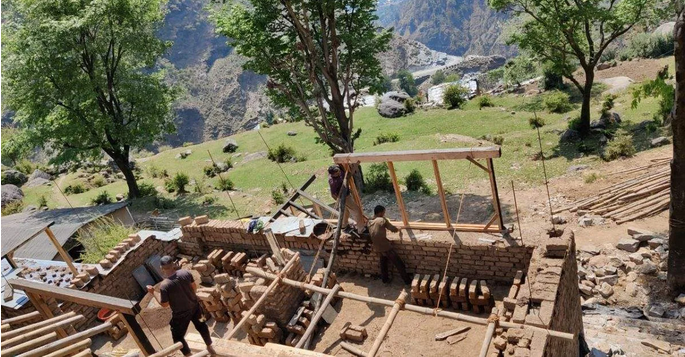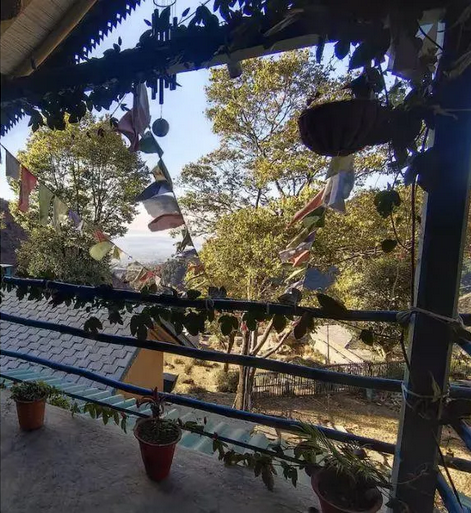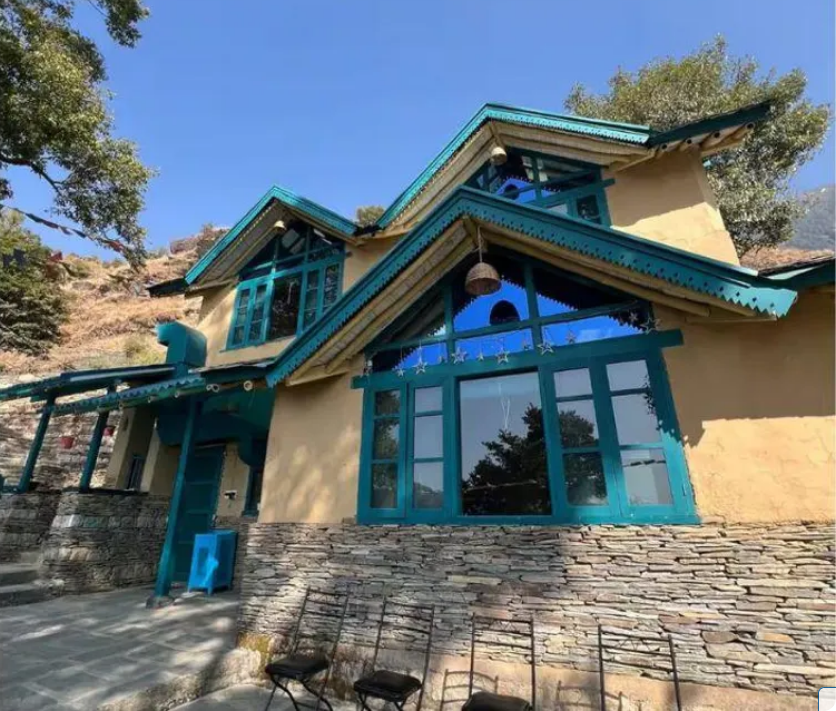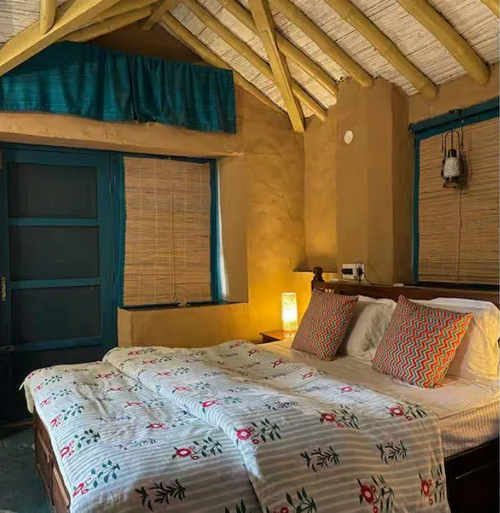Filmmakers Raman Siddhartha and Manju Narayan returned to Dharamshala, India to build a sustainable homestay made of local mud, bamboo, and slate. To reach it, you have to leave your car behind and walk a stretch of narrow path. Here’s how they created an off-grid haven rooted in tradition and community.
“I’ve lived in London for 25 years, but I was born in Himachal. My father, a bureaucrat, took me to remote villages all the time. I grew up seeing mud homes that were deeply rooted in the land and community,” Raman says. “That never left me. It stayed in my subconscious that if I ever returned, I would build a mud house.”
 Returning to India with his wife, Manju, in 2016, the couple initially explored the region as filmmakers. But the growing clutter of concrete homes, even in remote Himalayan corners, deeply unsettled them. “Everyone was in a rush to ‘develop’,” Manju says. “Concrete everywhere. It felt like we were losing the soul of the land.”
Returning to India with his wife, Manju, in 2016, the couple initially explored the region as filmmakers. But the growing clutter of concrete homes, even in remote Himalayan corners, deeply unsettled them. “Everyone was in a rush to ‘develop’,” Manju says. “Concrete everywhere. It felt like we were losing the soul of the land.”
The couple’s decision to build an entirely sustainable home and eventually, a homestay, began as a personal project. But soon, the scale and significance of what they were creating outgrew that scope.
The structures were designed using mud bricks made from earth sourced locally, dried and shaped by hand. “Drying them was a challenge,” Raman admits. “The mountain weather is unpredictable. Many bricks were washed away by sudden rain.”
 The walls were packed with stone and mud, and the roofing slate was locally quarried. No industrial material was brought in. The design incorporated 18-inch thick walls, natural insulation using pine needles and dust, and multi-layered mud coatings that mimicked the strength of concrete — without the environmental cost.
The walls were packed with stone and mud, and the roofing slate was locally quarried. No industrial material was brought in. The design incorporated 18-inch thick walls, natural insulation using pine needles and dust, and multi-layered mud coatings that mimicked the strength of concrete — without the environmental cost.
 With no road access at the time, every material, from bricks to bedding, had to be transported by mules. “Friends and family called us mad,” Raman laughs. “They said this was a foolish thing to do. But we were clear, we didn’t want to disturb the land.”
With no road access at the time, every material, from bricks to bedding, had to be transported by mules. “Friends and family called us mad,” Raman laughs. “They said this was a foolish thing to do. But we were clear, we didn’t want to disturb the land.”
In fact, the path to the retreat remains intentionally non-motorable. “The home should adapt to the land, not the other way around.” Today, a small road exists, thanks in part to the couple’s efforts with local authorities. And the road is primarily not for tourists, but to help the villagers in nearby homes access emergency care more easily.
 At first, not everyone in Thathri was convinced. “People filed complaints against us,” Manju recalls. “They couldn’t understand why anyone would build a mud house willingly; it was seen as something the poor do out of necessity.” But time and tea heal most things. As the couple integrated with village life, attending weddings, sharing meals, and participating in festivals, their intentions became clearer. “Now, we’re seen as part of the community,” Manju says. “And more importantly, the locals are starting to see value in their traditional homes again.”
At first, not everyone in Thathri was convinced. “People filed complaints against us,” Manju recalls. “They couldn’t understand why anyone would build a mud house willingly; it was seen as something the poor do out of necessity.” But time and tea heal most things. As the couple integrated with village life, attending weddings, sharing meals, and participating in festivals, their intentions became clearer. “Now, we’re seen as part of the community,” Manju says. “And more importantly, the locals are starting to see value in their traditional homes again.”
“We had no scaffolding like you’d see in cities. Most of the work was done by local artisans using traditional tools. It was a collective memory — something modern design has almost forgotten.”
 The mud walls are resilient through the seasons. The natural plasters used, involving pine needles and multiple binding layers, have kept out seepage and cracks. “We haven’t had to spend on repairs the way you would with concrete homes,” Raman explains.
The mud walls are resilient through the seasons. The natural plasters used, involving pine needles and multiple binding layers, have kept out seepage and cracks. “We haven’t had to spend on repairs the way you would with concrete homes,” Raman explains.
 The real saving, though, lies in preserving the terrain. By not flattening land or using heavy equipment, the retreat has avoided the kind of erosion and drainage issues that plague many mountain resorts.
The real saving, though, lies in preserving the terrain. By not flattening land or using heavy equipment, the retreat has avoided the kind of erosion and drainage issues that plague many mountain resorts.
 What they do hope to grow is community engagement by helping more people understand that sustainability isn’t about aesthetics, but ethics. “It’s not just how you build,” Manju adds. “It’s how you live.” The retreat is not just about living closer to nature, but about learning how to live without harming it. It doesn’t lecture, it invites.
What they do hope to grow is community engagement by helping more people understand that sustainability isn’t about aesthetics, but ethics. “It’s not just how you build,” Manju adds. “It’s how you live.” The retreat is not just about living closer to nature, but about learning how to live without harming it. It doesn’t lecture, it invites.
 You can read the original article at thebetterindia.com
You can read the original article at thebetterindia.com
